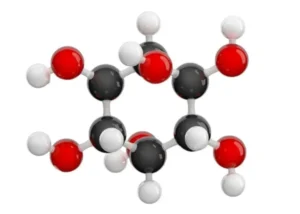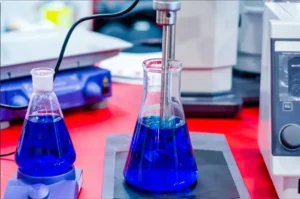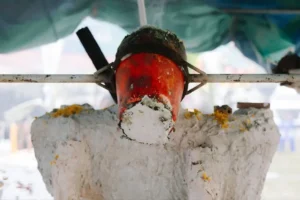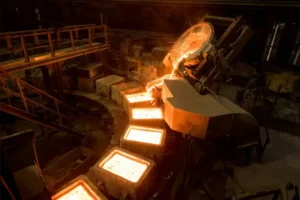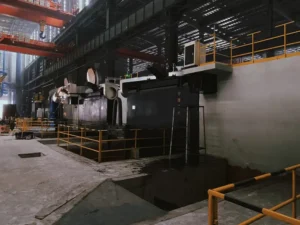Executive Summary: In foundry production, scrap steel is an indispensable furnace charge material, but its compositional complexity introduces “unseen enemies”—residual elements such as phosphorus (P), sulfur (S), chromium (Cr), and nickel (Ni). These trace, harmful elements are passed on, o “inherited,” from the charge material to the final casting. Even if the primary chemical components (like carbon, silicon, and manganese) meet specifications, these residual elements can quietly degrade the internal structure, leading to reduced material toughness, poor weldability, and even critical defects like hot tearing and brittle fracture during heat treatment or service. This article provides an in-depth exploration of the hereditary risks of these tramp elements and offers practical methods for furnace charge inspection and dilution calculation to help foundries prevent these issues before they occur.
I. The “Hereditary Effect”: How Residual Elements Become a Hidden Threat to Castings
The casting process is essentially the remelting and recrystallization of metal. During this process, all elements contained within the scrap steel, whether beneficial or detrimental, are almost entirely dissolved into the molten metal and become part of the new casting’s chemical composition. This transfer is known as the “hereditary effect” of residual elements.
Unlike some impurities that can be effectively removed through refining, elements like P, S, Cr, and Ni are difficult to oxidize or remove via slag in conventional electric arc furnace (EAF) or induction furnace melting processes. Samakatuwid, like “genetic traits,” they are passed down from the previous generation of products (scrap steel) to the next (castings), carrying their negative impacts along with them.
Key Detrimental Effects:
- Phosphorus (P): The primary culprit behind “cold shortness” or low-temperature embrittlement in steel. While phosphorus has a significant solid-solution strengthening effect, it sharply increases the ductile-to-brittle transition temperature. When P segregates at grain boundaries, it severely weakens the cohesion between grains, making the casting highly susceptible to brittle fracture under low-temperature conditions or impact loading.
- Sulfur (S): The main cause of “hot shortness” or hot tearing. Sulfur reacts with iron to form low-melting-point iron sulfide (FeS). During steel solidification, these sulfides distribute themselves as a liquid film along austenite grain boundaries. When the casting is subjected to high-temperature processing or is in a high-temperature service environment, these low-melting-point phases melt prematurely, causing grain boundaries to separate and form hot tears.
- Chromium (Cr): Although an important alloying element, when present as a residual element in non-alloyed or low-alloy steels, it increases hardenability. This can lead to the formation of unintended martensitic structures during cooling or welding, increasing hardness and brittleness and inducing cracks. For steel grades requiring specific properties, excess Cr disrupts the intended performance balance.
- Nickel (Ni): Similar to chromium, nickel is a key alloying element that improves strength and toughness. Gayunpaman, as an unintentional residual element, it alters the steel’s phase transformation points and heat treatment behavior. An accumulation of residual Ni and Cr, especially in carbon steels, can significantly impair weldability and machinability.
A typical scenario: A batch of castings passes all inspections for conventional elements like C, Si, and Mn, yet its impact toughness (especially at low temperatures) is far below expectations. The root cause is very likely excessive phosphorus inherited from scrap steel. This hidden performance defect in a “qualified” product is one of the most dangerous quality risks in production.
II. Prevention is Key: Furnace Charge Inspection and Control
Since residual elements are difficult to remove during melting, the most effective and economical control method is to implement strict inspection and screening of charge materials before they enter the furnace.
Charge Material Inspection Methods
Modern foundries rely on fast and accurate chemical analysis equipment to ensure the quality of their raw materials.
- Handheld X-Ray Fluorescence (XRF) Analyzer: This is the most common and convenient tool for inspecting scrap steel today. Operators can use it like a temperature gun to perform rapid, on-site analysis of different batches and forms of scrap, obtaining a general reading of alloy content and residual elements within seconds. It is crucial for the initial sorting, pricing, and inventory management of scrap.
- Optical Emission Spectrometry (OES): This is a more precise laboratory analysis method. Samples are typically taken from scrap before charging or from the melt during the process. The instrument uses an electric spark to excite the sample and analyzes its emitted light spectrum, providing a rapid and highly accurate measurement of dozens of elements, including P and S. This is the cornerstone for calculating charge recipes and controlling melt chemistry.
Establishing Control Standards for Residual Elements
Foundries must establish internal acceptance standards for scrap steel based on the grades and specifications of the castings they produce. For instance, standards for critical pressure-retaining components or castings used in low-temperature service have very strict limits on residual elements like P, S, Cr, and Ni.
| Common Steel Casting Grade | Standard | Max P Content (%) | Max S Content (%) | Approx. Max Cr Residual (%) | Approx. Max Ni Residual (%) |
| ASTM A216 WCB (Carbon Steel) | ASTM International | ≤ 0.040 | ≤ 0.045 | ≤ 0.50 | ≤ 0.50 |
| ASTM A352 LCB (Low-Temp Carbon Steel) | ASTM International | ≤ 0.040 | ≤ 0.045 | ≤ 0.50 | ≤ 0.50 |
| JIS G5101 SC450 (Carbon Steel) | Japanese Industrial Standards | ≤ 0.040 | ≤ 0.040 | Typically lower | Typically lower |
| DIN EN 10213 GP240GH (Carbon Steel) | German/European Norm | ≤ 0.030 | ≤ 0.025 | Cr+Ni+Mo+V < 0.70 | (See left) |
Note: The table lists the maximum allowable values per the standard. In practice, to ensure stable performance and a safety margin, internal control limits are often set even stricter than what the standard requires.
III. Precision Control: The Dilution Calculation Method
When a portion of the available scrap has a high content of a residual element but must be used, the only solution is to “dilute” it by mixing it with virgin materials like pig iron, internal returns (foundry returns), or high-quality scrap with low residual content. This is achieved through a straightforward Mass Balance Calculation.
Principle: The total mass of an element in the final molten metal is equal to the sum of the masses of that element from all charge materials (ignoring burn-off).
Formula:
Wfinal × Cfinal = (W1×C1) + (W2×C2) + ⋯ + (Wn×Cn)
Where:
- Wfinal is the total weight of the final molten metal.
- Cfinal is the target percentage concentration of the element in the final melt.
- W1,W2,…,Wn are the weights of the different charge materials (Scrap A, Scrap B, Pig Iron, atbp.).
- C1,C2,…,Cn are the percentage concentrations of the element in the corresponding charge materials.
【Practical Calculation Example】
A foundry needs to melt a 1000 kg heat of steel and aims to keep the final phosphorus (P) content at or below 0.035%.
Available Charge Materials:
- Pig Iron: Weight to be determined (WPI), with a very low P content of 0.010%.
- Returns: 300 kg (WR), with a measured P content of 0.030%.
- Purchased Scrap: Weight to be determined (WS), with a high measured P content of 0.050%.
Calculation Steps:
Step 1: Define the Total Weight Relationship The total weight is 1000 kg, so:
WPI + WR + WS = 1000 kg
WR=300 kg, then:
WPI+WS=700 kg ⇒ WPI=700−WS
Step 2: Apply the Mass Balance Formula for Phosphorus The target P content is 0.035%. Substitute the values into the formula:
1000×0.035%=(WPI×0.010%)+(300×0.030%)+(WS×0.050%)
Step 3: Solve the Equation To simplify, we can remove the percentage signs for calculation:
1000×0.035=(WPI×0.010)+(300×0.030)+(WS×0.050)
35=0.010⋅WPI+9+0.050⋅WS
26=0.010⋅WPI+0.050⋅WS
Now, substitute the relationship from Step 1, WPI=700−WS:
26=0.010×(700−WS)+0.050⋅WS
26=7−0.010⋅WS+0.050⋅WS
19=0.040⋅WS
WS =19 / 0.040 = 475 kg
Step 4: Determine the Final Charge Recipe
- Purchased Scrap (WS): 475 kg
- Pig Iron (WPI): WPI=700−475=225 kg
- Returns (WR): 300 kg
Konklusyon: To ensure the final phosphorus content of the steel does not exceed 0.035%, the furnace charge should consist of 225 kg of Pig Iron, 300 kg of Returns, at 475 kg of the purchased scrap with 0.050% P.
This method can be used to check and balance S, Cr, Ni, and any other critical residual elements, allowing for the creation of an optimized charge recipe that is both economical and meets all quality requirements.
IV. Konklusyon
The “unseen enemy” is dangerous because it is hidden. The hereditary effect of residual elements on casting performance is a real and present danger, and ignoring it can lead to severe quality failures and financial losses. Modern foundries must establish a comprehensive control system that spans from scrap steel acceptance to final charge calculation:
- Arm Yourself with Vision: Utilize advanced equipment like handheld XRF and OES analyzers to achieve rapid and accurate identification of charge material chemistry.
- Define Clear Boundaries: Based on product standards and customer requirements, establish strict internal control limits for residual elements.
- Calculate Scientifically: Master the use of mass balance principles for charge dilution calculations to ensure the chemical composition of every heat is precisely controlled.
Only by integrating vigilance against these “unseen enemies” into daily production management and technical practices can a foundry achieve true consistency and reliability in casting quality, earning lasting trust in the market.


